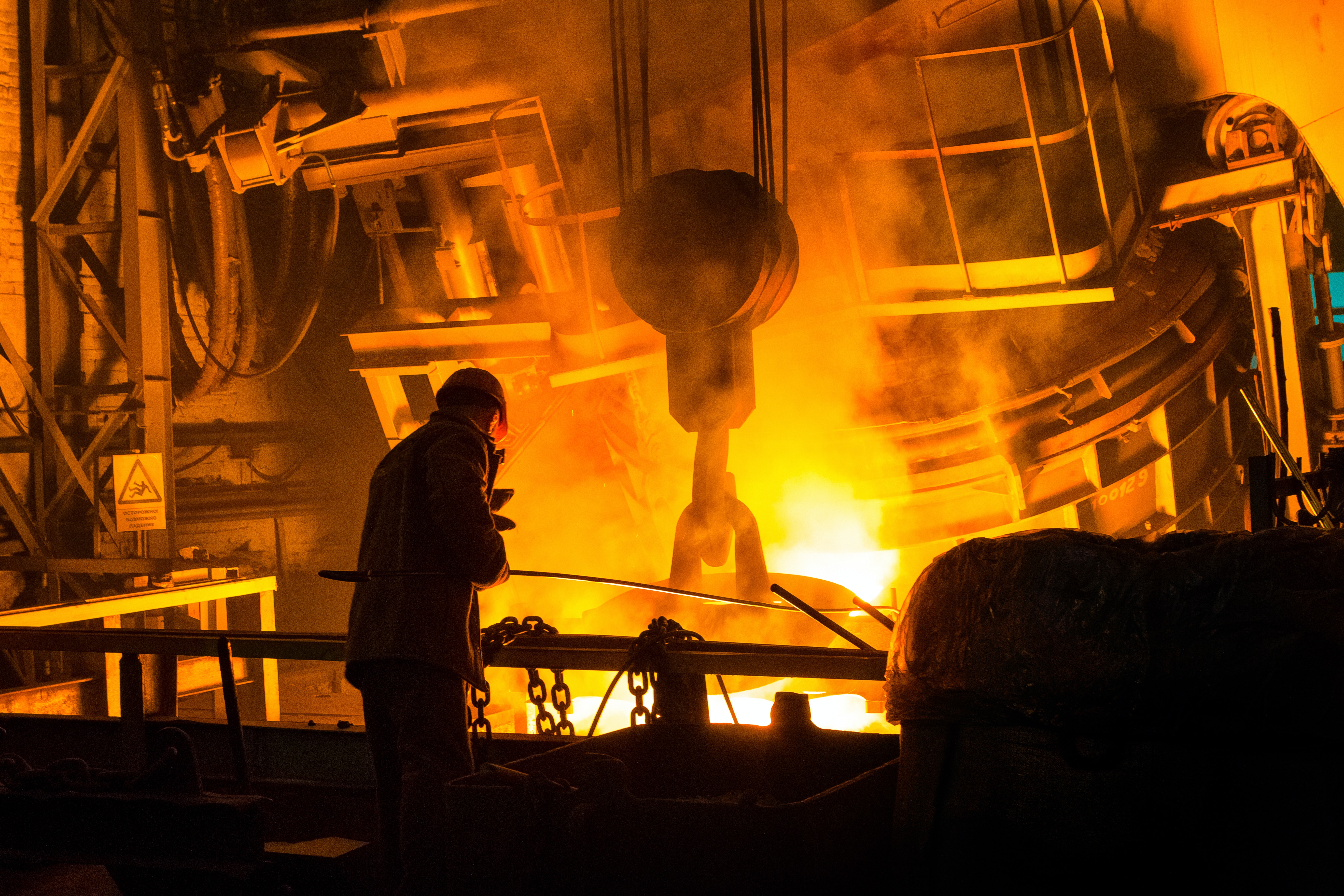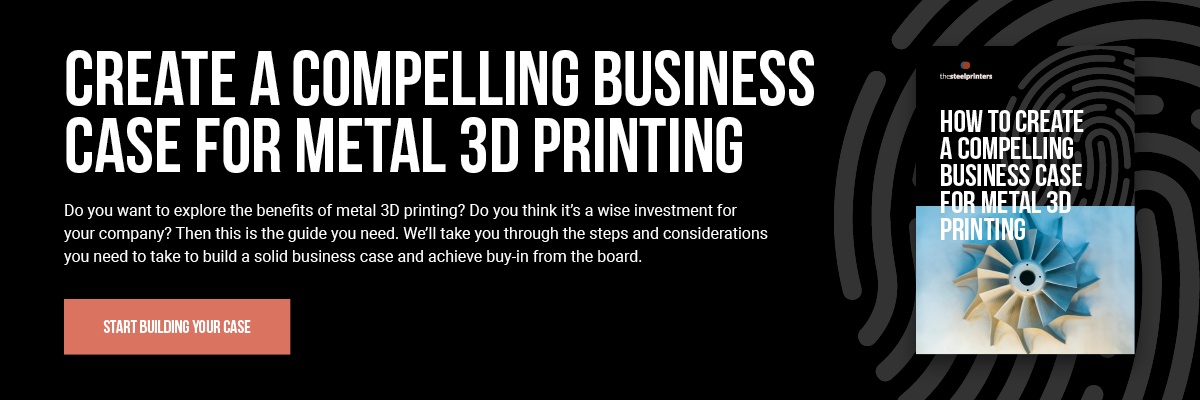Metal 3D printing presents many opportunities across multiple industries, improving productivity,...
Metal additive manufacturing shows no signs of slowing down. Offering multiple benefits and operational improvements for heavy industry, metal 3D printing is a technology that can help you reduce downtime, improve lead time and extend the overall lifetime of your machinery.
One industry that additive manufacturing lends itself to is the steel industry. But how exactly? And how does it relate to each stage of the value chain? In this blog, we answer these questions.
- What Is Metal Additive Manufacturing?
- How Is Metal Additive Manufacturing Being Used in the Steel Industry?
- Blast Furnace, Steel Workshop and Hot Rolling Mill
- Cold Rolling Mill
- Galvanising, Pickling, Continuous Annealing and Tinplate Mill
- Make Your Case for Metal 3D Printing
What Is Metal Additive Manufacturing?
Additive manufacturing is the industrial name for 3D printing, including metal 3D printing. This process involves the creation of a physical part from a CAD model using a process that deposits material layer by layer.
There are several different metal 3D printing technologies, each with its benefits and uses. The idea of additive manufacturing is that it’s used in unison with traditional manufacturing to gain the best outcome for your operations, including reducing downtime, lead times and maintenance costs.
How Is Additive Manufacturing Being Used in the Steel Industry?
While the benefits of metal 3D printing are yet to be fully discovered in the steel industry, it holds many opportunities.
Metal 3D printing produces parts with intricate, complex features that are difficult or even impossible to create using traditional manufacturing methods. Metal 3D printing can produce parts with high density and mechanical strength properties, making it an ideal manufacturing method for steel industry parts.
To help you understand the opportunities for metal 3D printing within the production value chain, we look at some of the core processes and the benefits that metal 3D-printed parts can offer.
Blast Furnace, Steel Workshop and Hot Rolling Mill
The technical challenges associated with this stage of the value chain make metal 3D printing a reliable option for creating spare parts. Using 3D printing it's possible to produce parts that are durable and can withstand extreme operating temperatures.
Downtime is the most significant risk to mitigate here. The equipment involved in this production stage is essential to the entire value chain. The breakdown of a single piece of equipment can cause significant bottlenecks and lead to severe production delays, which in turn increases operating costs. Thankfully, metal 3D-printed spare parts can be produced rapidly on-demand, reducing the risk of equipment downtime.
A key example of this is the production of a 3D-printed heat exchanger used to cool the blast furnace shell. The optimised design of the 3D-printed part enables greater heat transfer efficiency and the elimination of weld joints, resulting in improved component and system reliability. The manufacturing lead time was also reduced by 90%, since no complex machining or welding operations were required.
The result? A fast solution that reduces the risk of a blast furnace shutdown and ultimately extends the operating life of the blast furnace shell.
Want to find out more about this case study? Read the full details here.
Cold rolling Mill
At the cold rolling mill production stage, process control and equipment reliability are critical to achieving high operational performance. Lasers and cameras are installed throughout the production line for measuring the position of moving strips and for detecting material defects.
3D-printed laser and camera housings are often used to protect the sensitive instrumentation from the harsh operating environment. In doing so, the lasers can operate effectively, reducing the risk of strip misalignment and the development of defects that require reprocessing.
3D printing has the ability to incorporate intricate features into housing designs – such as air blowing or liquid cooling channels – to maintain sensor functionality. It can also produce these one-off bespoke designs more cost effectively compared to traditional manufacturing methods.
As automation within cold rolling mills continues, the integration of sensors and electronics in the production line is growing, representing increasing opportunities for bespoke 3D-printed housings.
Galvanising, pickling, continuous Annealing and tinplate Line
At the finishing line stage, minimising defects is essential as there are many events that can occur which can impact the quality of finished products. If a process is not controlled properly – for example, the galvanising layers are too thick – it can significantly impact product performance. Minimising maintenance costs is also important, which can be a challenge considering the chemical environments of the finishing lines.
So how can metal 3D printing help minimise these problems? Similarly to its application throughout the rest of the production value chain, the ability to create high performance parts with optimised designs makes metal 3D printing a reliable solution for finishing stages.
A case example is the production of a metal 3D printed zinc pump turbine assembly used in the pickling line. The original pump was made of cast steel, which would only last for two pickling cycles before having to be replaced due to the corrosive chemicals the components were subjected to.
By optimising the design of the components to remove weld joints and by 3D printing them in 316L stainless steel, the lifetime of the pump assembly was extended by over 300%. As a result, maintenance hours and spare parts in inventory could be reduced, representing significant operational savings.
In turn, metal 3D printing presents an opportunity to generate long-term savings through maintenance spend reduction, lifetime reliability improvements and functional performance improvements.
Make Your Case for Metal 3D Printing ADoption
If you’re looking to harness the benefit of metal 3D printing and use additive manufacturing throughout your steel production operations, you’ve come to the right place.
But first, you’ll need to make a successful business case and receive buy-in from the rest of your business. To help you get started, we’ve created a helpful guide to take you through the steps from identifying the best use cases to demonstrating the added-value savings. We’ve even provided an example case.
To get your copy, simply download it by clicking the link below.




